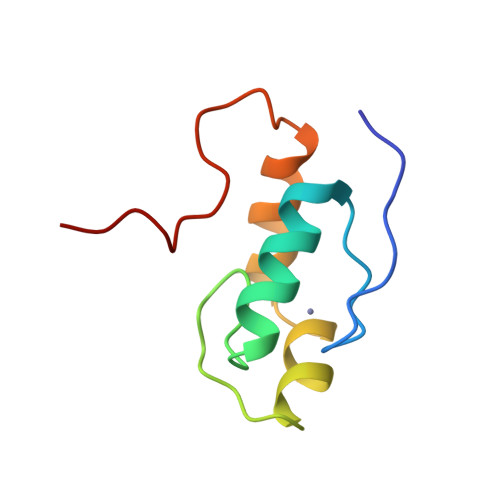Structural characterization of the crimean-congo hemorrhagic Fever virus gn tail provides insight into virus assembly.
Estrada, D.F., De Guzman, R.N.(2011) J Biological Chem 286: 21678-21686
- PubMed: 21507948
- DOI: https://doi.org/10.1074/jbc.M110.216515
- Primary Citation of Related Structures:
2L7X - PubMed Abstract:
The RNA virus that causes the Crimean Congo Hemorrhagic Fever (CCHF) is a tick-borne pathogen of the Nairovirus genus, family Bunyaviridae. Unlike many zoonotic viruses that are only passed between animals and humans, the CCHF virus can also be transmitted from human to human with an overall mortality rate approaching 30%. Currently, there are no atomic structures for any CCHF virus proteins or for any Nairovirus proteins. A critical component of the virus is the envelope Gn glycoprotein, which contains a C-terminal cytoplasmic tail. In other Bunyaviridae viruses, the Gn tail has been implicated in host-pathogen interaction and viral assembly. Here we report the NMR structure of the CCHF virus Gn cytoplasmic tail, residues 729-805. The structure contains a pair of tightly arranged dual ββα zinc fingers similar to those found in the Hantavirus genus, with which it shares about 12% sequence identity. Unlike Hantavirus zinc fingers, however, the CCHF virus zinc fingers bind viral RNA and contain contiguous clusters of conserved surface electrostatics. Our results provide insight into a likely role of the CCHF virus Gn zinc fingers in Nairovirus assembly.
Organizational Affiliation:
Department of Molecular Biosciences, University of Kansas, Lawrence, Kansas 66045, USA.

















